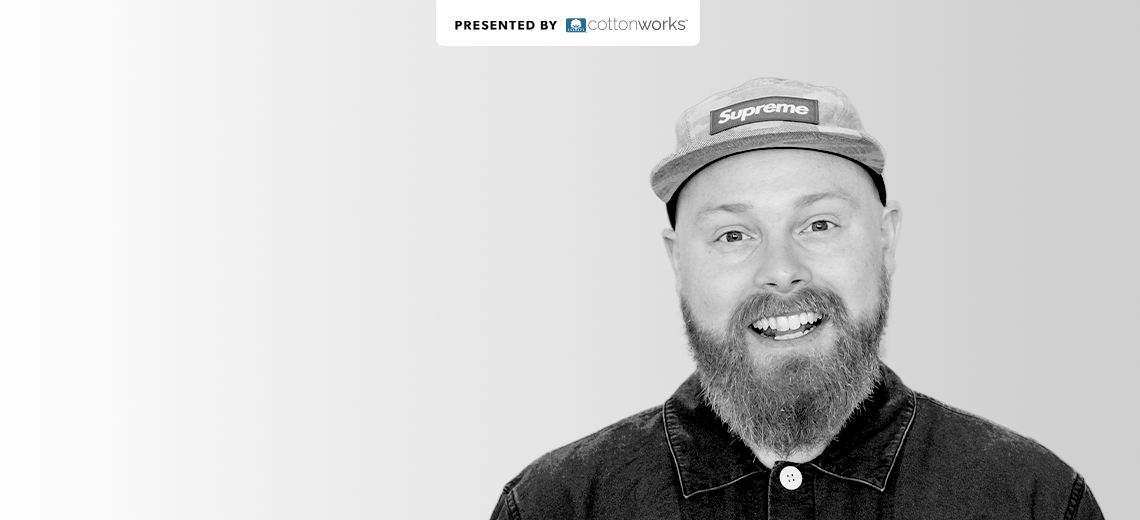This is an episode of the Glossy Fashion Podcast, which features candid conversations about how today’s trends are shaping the future of the fashion industry. More from the series →
Subscribe: Apple Podcasts | Stitcher | Google Play | Spotify
For many consumers, a well-curated Amazon homepage — complete with a fall shoe edit and ‘customers’ most loved’ products, from toaster ovens to tote bags — has replaced the need for the local department store. But the benefits of a brick-and-mortar store for brands and customers alike were not lost on Matt Alexander, co-founder and CEO of Neighborhood Goods, a department store for the new age.
Unlike the traditional — and dying — breed of department stores, Neighborhood Goods, which launched in 2017, caters to the modern consumer with a selection of rotating brands and innovative restaurants.
For some brands, having a presence at Neighborhood Goods resembles “a pop-up,” while for others, it resembles “wholesale,” “testing real estate” or “a marketing channel,” said Alexander on the latest Glossy Podcast. “It creates this opportunity in this landscape and ecosystem where they can show up in a physical and digital way, [and] leverage the restaurants and different bits and pieces. [And they can] inexpensively get in front of a great consumer and accomplish all sorts of different goals.”
Since the first Neighborhood Goods location opened in Plano, Texas, the company has continued to expand its physical footprint, with stores in Austin and Chelsea, as well as its digital presence. “With the [onset] of the pandemic, [all products] went online,” leading to a 1,000% year-over-year sales growth on digital last year, said Alexander.
“The more we can [translate] the ‘why’ and the storytelling that we do well in the stores to the digital realm, the better,” he said. “[Our website] can augment and create something special to exist alongside a lot of existing channels for the brands [and] consumers.”
Below are additional highlights from the conversation, which have been lightly edited for clarity.
Ad position: web_incontent_pos1
Looking at real estate in five ways
“We look at real estate in five different buckets. One would be a major metropolitan market, like we have with our Chelsea store. It has a huge amount of built-in traffic and exposure. The customer there is probably already aware of your brand and it’s about reactivating lapsed customers and/or opening up more near-term physical availability to existing customers. Then there’s the second type, which would be up-and-coming markets like what we have in Austin. It’s about acquiring a lucrative customer, but it’s also about fostering loyalty there. Then you have the third type, which is suburban areas like we have in Plano. That is an affluent customer that is inclined toward shopping online. It’s a real opportunity to catch them and acquire them earlier in their lifecycle. Then the fourth type would be malls, which we have not done, but with a captive audience inside of a mall, there’s a lot of opportunity to do something interesting. And then the fifth type, which we also haven’t done quite yet, is international and seasonal opportunities. We’re thinking less about the name of a place and more about the feature set of a given location and what that might afford a brand.”
On categorical curation
“The path we’re heading toward at the moment is 75-100 brands per space right now. The goal isn’t to have a full product range from every single brand… It’s about something that’s more blended. More subtle. And the example I’ve been giving a lot is: If I’m in New York and I spill coffee on my shirt, I know that I can go to X, Y, Z department store to go buy the same shirt… If I don’t spill coffee on my shirt, I have no reason to go to any of those department stores, because I can go when I’m at home; it’s more of a utility-based relationship. With Neighborhood Goods, on the other hand, I would have a good reason to go because there’s a lot of discovery, there are the restaurants and all these different pieces to that equation. But at the opposite end of that is that if I spill coffee on my shirt, I don’t have that much reason to go to Neighborhood Goods. And that’s been this area where we’ve been playing [around] a little bit more and thinking about it.”
The Neighborhood Goods core experience
“The core experience remains the same, both pre-pandemic and post. The original thesis was that we would carve the space into quadrants, and we would assign people to those given areas to become early subject matter experts on a given brand that belonged in that area. And that way, for the first week or two that brands [are] in the space, you have these people that would be in a given area that would be extremely knowledgeable on their particular area of the store. Then when we have downtime. They cross-train into different areas around the store. Within a couple of weeks, we’re at a point where everyone is knowledgeable on every brand in the space, and sometimes faster.”




